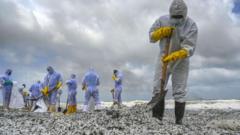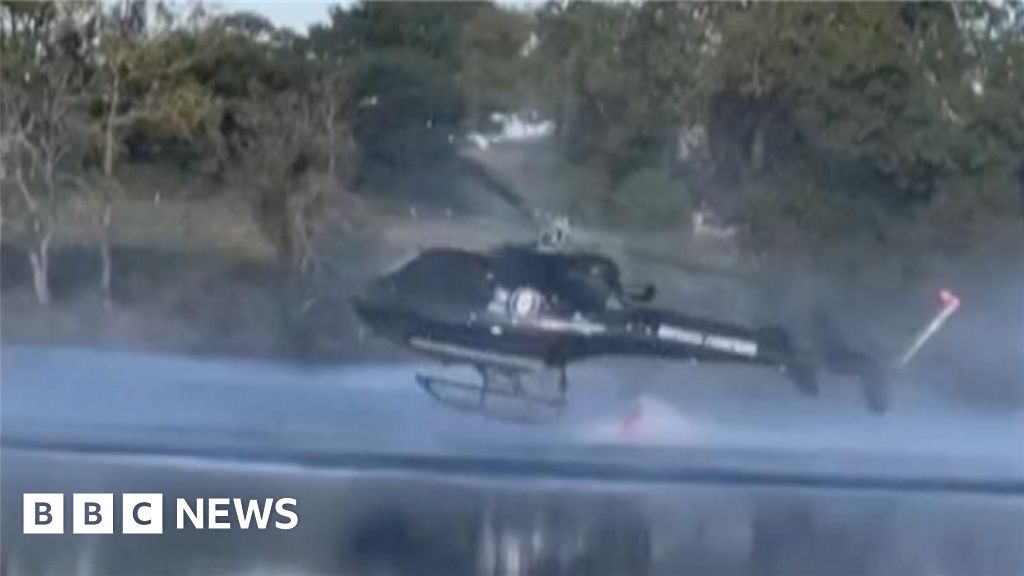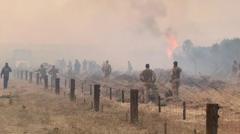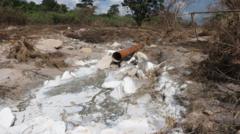Amid the idyllic coastlines of Sri Lanka lies an environmental nightmare that refuses to fade. Four years after the catastrophic sinking of the X-Press Pearl container ship, which led to the largest plastic spill in recorded history, local volunteers are still combing the nation’s beaches, collecting harmful plastic pellets and dealing with the unseen consequences of the disaster.
Since May 2021, billions of plastic nurdles, along with various toxic materials, were spewed into the ocean following the ship's sinking, disrupting marine life across the region. Initially, as the white nurdles blanketed the beaches, the visible destruction was alarming—dead marine animals began to wash ashore. However, scientists now warn that the repercussions of this event are far more insidious and long-lasting than initially estimated.
Research has revealed that microplastics, particularly those contaminated during the fire aboard the ship, have evolved into significant environmental hazards, absorbing toxic chemicals like heavy metals as they sink deeper into the sand. According to David Megson of Manchester Metropolitan University, these nurdles act like "chemical sponges," endangering aquatic organisms that ingest them, and possibly threatening the health of humans who consume contaminated seafood.
From the outset, the X-Press Pearl disaster raised profound questions. After boat crews noticed severe leaks from a container holding nitric acid, the ship remained at sea for days, seeking assistance from neighboring countries before ultimately trailing into Sri Lankan waters. Following firefighting efforts that failed to control the blaze, the vessel sank, releasing its hazardous cargo.
Local environmentalist Muditha Katuwawala described the shocking aftermath, stating that the sight of distressed wildlife showcased the immediate cruelty of the spill. Volunteers managed to salvage hundreds of kilos of nurdles daily at first, but with time, the effort dwindled as the plastic became more dispersed and difficult to locate. Today, numerous nurdles endure, exacerbated by contamination from surrounding marine pollutants.
Reflecting on the ongoing struggle, local fishermen like Jude Sulanta noted a stark decline in fish populations since the disaster, stating that their lives have been irreparably altered. As the local economy falters, competition for dwindling resources urges many to abandon their traditional way of life.
In terms of accountability, X-Press Feeders Ltd, the ship's owner, claims it has provided over $130 million for wreck removal and cleanup efforts but argues that the Sri Lankan government’s response has lagged. The Supreme Court recently ordered the company to pay an initial $1 billion in compensation, yet ongoing disputes reveal larger questions around the adequacy of these payments and the far-reaching impacts of the disaster.
Experts estimate the total environmental and economic costs of the X-Press Pearl incident may soar above $6 billion. They underscore the potential long-term ramifications of exposure to dioxins and other harmful pollutants, which could affect thousands and lead to tragic health outcomes for the local population.
As the X-Press Pearl disaster continues to resonate through Sri Lanka, the hope for restoration is overshadowed by grim realities. While some volunteers strive to reclaim Sri Lanka's beautiful coasts and waters, others see no path forward in a world drastically altered. Their stories remind us that the echoes of such environmental catastrophes resonate across time, shaping futures in ways we are still working to comprehend.




















